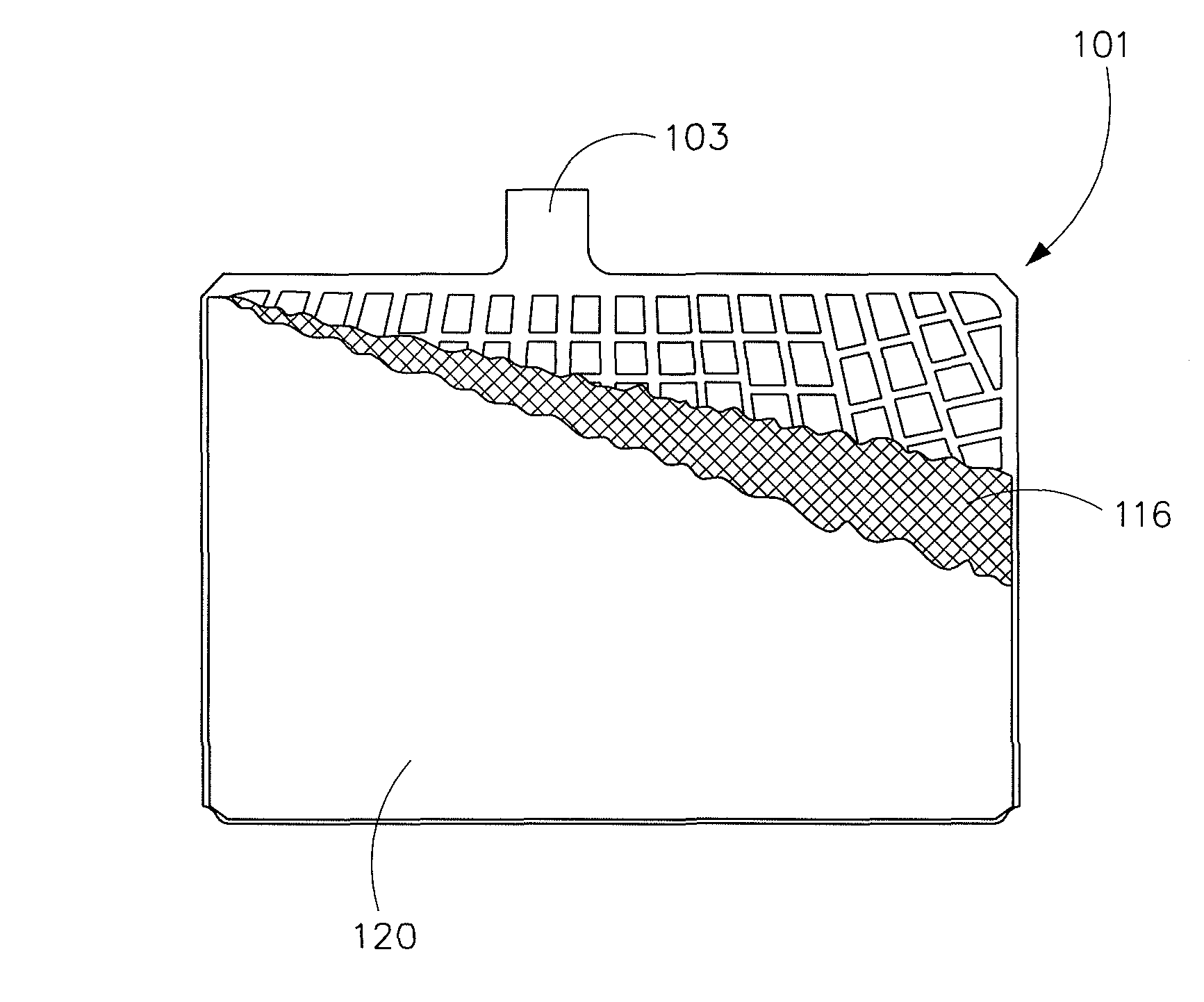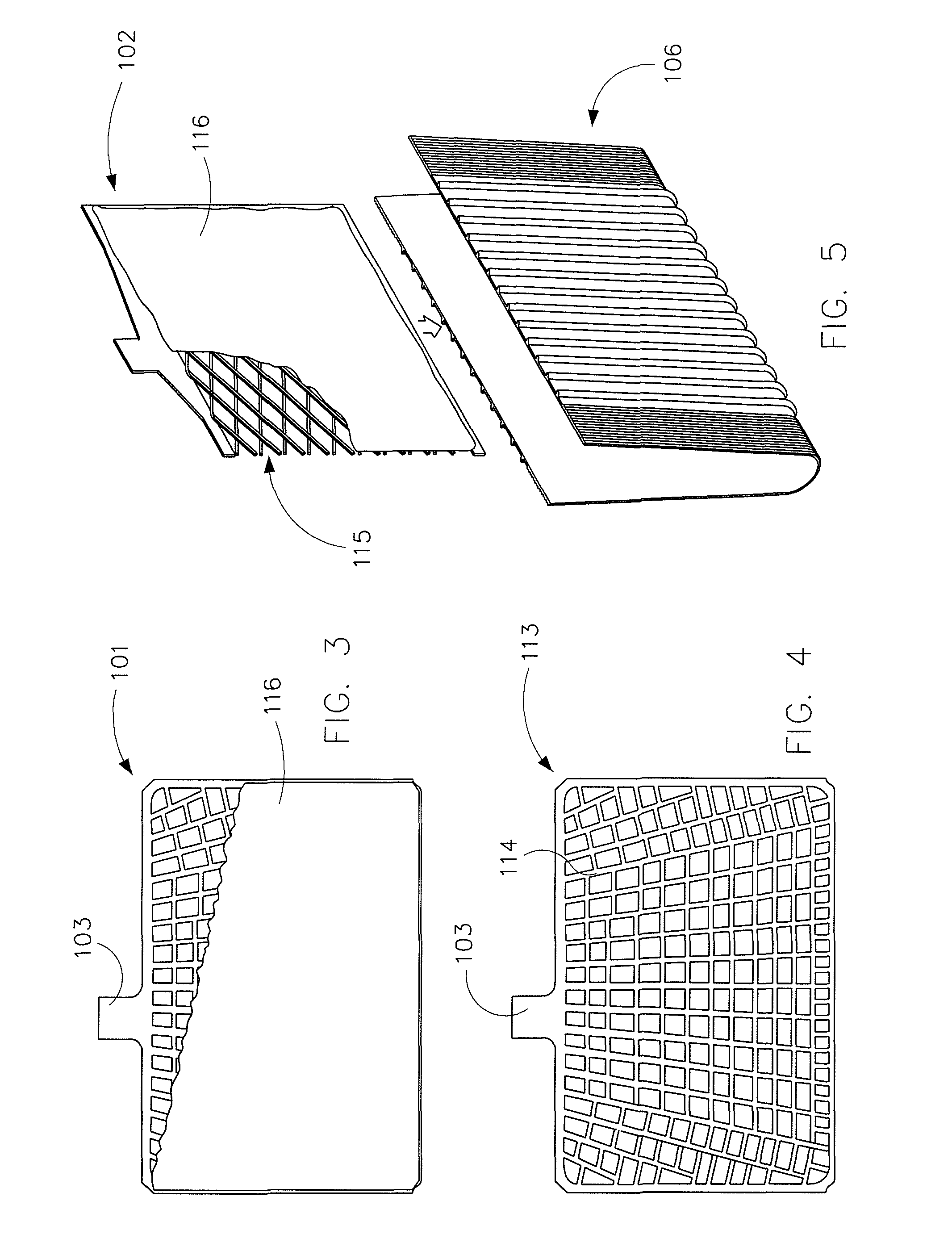Battery electrode and method for manufacturing same
a battery electrode and electrode technology, applied in the field of batteries, can solve the problems that paper and fabric printing cannot realize certain advantageous features, and achieve the effect of reducing production costs and improving production efficiency
- Summary
- Abstract
- Description
- Claims
- Application Information
AI Technical Summary
Benefits of technology
Problems solved by technology
Method used
Image
Examples
example 1
[0120]A lead storage battery for start-stop applications was assembled using electrodes manufactured as described above. More specifically, the positive electrodes included a stamped grid (i.e., PowerFrame™ grid), active material and the pasting textile or scrim shown in FIGS. 7 and 8. The pasting textile was constructed of a continuous PET homopolymer having a round cross section and generally smooth texture. The pasting textile was point-bonded with a weight of 0.5 oz. per square yard and a thickness of 4.3 mils. The microfiber diameter was about 12-16 μm and the fiber denier was about 2.2 per fiber.
[0121]The stop / start cycling properties of the assembled battery was tested against the stop / start cycling properties of a battery having similarly-constructed negative electrodes and polyethylene separators, and positive electrodes including a stamped grid (i.e., PowerFrame™ grid), active material and a conventional pasting paper provided thereon. A graph comparing the stop / start cycl...
example 2
[0122]An improved flooded lead storage battery was assembled using electrodes manufactured as described above. More specifically, the positive electrodes included a stamped grid (i.e., PowerFrame™ grid), active material and the pasting textile or scrim shown in FIGS. 7 and 8. The pasting textile was constructed of a continuous PET homopolymer having a round cross section and generally smooth texture. The pasting textile was point-bonded with a weight of 0.5 oz. per square yard and a thickness of 4.3 mils. The microfiber diameter was about 12-16 μm and the fiber denier was about 2.2 per fiber.
[0123]The repetitive reserve capacity cycling of the assembled lead storage battery was tested, measured and compared against the repetitive reserve capacity cycling of a battery having electrodes using similar grids and active material, but positive electrodes including pasting paper instead of a pasting textile, and glass mat separators which are common or standard in high cycling applications...
PUM
| Property | Measurement | Unit |
|---|---|---|
| thickness | aaaaa | aaaaa |
| length | aaaaa | aaaaa |
| length | aaaaa | aaaaa |
Abstract
Description
Claims
Application Information
 Login to View More
Login to View More - R&D
- Intellectual Property
- Life Sciences
- Materials
- Tech Scout
- Unparalleled Data Quality
- Higher Quality Content
- 60% Fewer Hallucinations
Browse by: Latest US Patents, China's latest patents, Technical Efficacy Thesaurus, Application Domain, Technology Topic, Popular Technical Reports.
© 2025 PatSnap. All rights reserved.Legal|Privacy policy|Modern Slavery Act Transparency Statement|Sitemap|About US| Contact US: help@patsnap.com



